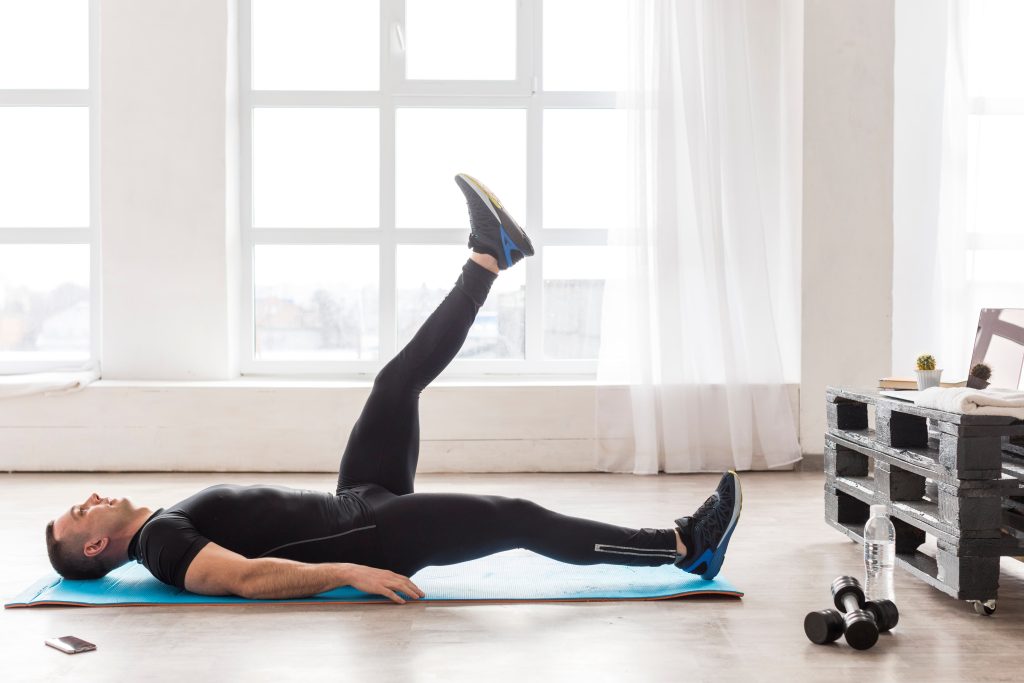22 de July de 2025
Supine Leg Exercises: Exercise Guide, Tips and Benefits
Supine leg exercises are movements performed while lying flat on your back. They are ideal for individuals looking to strengthen the lower body with minimal equipment and reduced joint strain. Whether you’re recovering from an injury, training at home, or adding variety to your routine, these exercises offer effective, low-impact leg training.
What Are Supine Leg Exercises?
Supine leg exercises involve leg movements performed in a lying face-up (supine) position. These exercises range from simple leg raises to more complex bridge and core-involved movements. They primarily target the quadriceps, hamstrings, glutes, and hip flexors while also engaging the core.
Examples include:
- Supine straight leg raises
- Glute bridges
- Marching bridges
- Supine hamstring slides
How to Do Supine Leg Exercises
Let’s walk through a basic supine straight leg raise:
- Setup: Lie on your back with one leg bent and the other straight.
- Engage Core: Brace your core and keep your back flat against the ground.
- Lift: Raise the straight leg to about 45–60 degrees, keeping it straight.
- Lower with Control: Slowly lower the leg without letting it drop or arching your back.
- Repeat: Perform 10–15 reps per leg for 2–4 sets.
You can progress these movements by adding resistance bands or ankle weights.

Benefits of Supine Leg Exercises
- Joint-Friendly Strength Training: These exercises reduce pressure on the knees and spine, making them ideal for beginners or individuals with joint issues.
- Improved Core Engagement: Many supine leg movements also activate the abdominals and deep core muscles, enhancing total-body stability.
- Enhanced Hip Mobility: Movements like leg raises and bridges promote flexibility and mobility in the hips, which is key for injury prevention.
- Rehabilitation Support: Commonly used in physical therapy settings, supine exercises help rebuild strength after injury or surgery.
- Accessibility: No gym required. You can perform them on a mat at home or even in bed, making them great for limited-mobility populations.
- Muscle Activation Without Heavy Load: By focusing on controlled form and mind-muscle connection, you can effectively strengthen muscles even with bodyweight.
Common Mistakes to Avoid
- Arching the Lower Back: Letting your lower back lift off the floor during leg lifts can strain the spine. Keep your core engaged and spine neutral.
- Using Momentum: Swinging the leg or rushing through reps reduces effectiveness. Focus on slow, controlled movement for best results.
- Neglecting Core Activation: A weak or disengaged core leads to poor stability and reduced effectiveness. Always brace the abdominals.
- Poor Breathing Technique: Holding your breath can increase intra-abdominal pressure. Exhale during the effort phase and inhale on the return.
- Uneven Form: Ensure both sides of your body are working evenly to prevent imbalances. Use mirrors or video feedback to self-correct.
- Skipping Warm-Up: Even simple movements benefit from a short warm-up to activate muscles and increase blood flow.
Supine Exercise Variations to Try
- Glute Bridge March: Adds a balance component by lifting one foot off the floor at a time while in bridge position.
- Wall-Assisted Leg Raises: A great beginner version that limits the range of motion for better control.
- Supine Band Leg Press: Mimics a leg press machine using resistance bands.
- Hamstring Slides with Towels or Sliders: Challenges hamstring and glute engagement with minimal equipment.
How to Program Them in Your Routine
Supine leg exercises work well in warm-ups, rehab sessions, or as part of a core and lower-body strength circuit. They can be done 2–3 times per week depending on your goals and fitness level. Combine them with glute and core work for a balanced posterior chain routine.

FAQs About Supine Leg Exercises
How to strengthen legs while lying in bed?
Try straight leg raises, glute bridges, and isometric contractions. These require no equipment and can be done on a mattress.
What are the benefits of supine leg raises?
They build strength in the hip flexors, quads, and core while minimizing pressure on the spine and joints.
What are the benefits of supine exercises?
Supine movements enhance core stability, improve posture, support rehab, and are generally safe for most fitness levels.
What is an example of a supine exercise?
A glute bridge is a classic example that targets the glutes and hamstrings while engaging the core.
What are the benefits of the supine position?
It provides spinal support, reduces pressure on joints, and allows for controlled movements, making exercises safer and more accessible.
Supine leg exercises offer a low-impact, highly accessible way to strengthen the lower body and core. Whether you’re a beginner, returning from injury, or just looking for variety, these movements deliver functional benefits that fit into any fitness routine.
